How often to text? 5 cadences we suggest to 17,000+ businesses
Tired of guessing at how often to text your customers? Steal these SMS templates to plan your first 30 days of texts (and beyond).
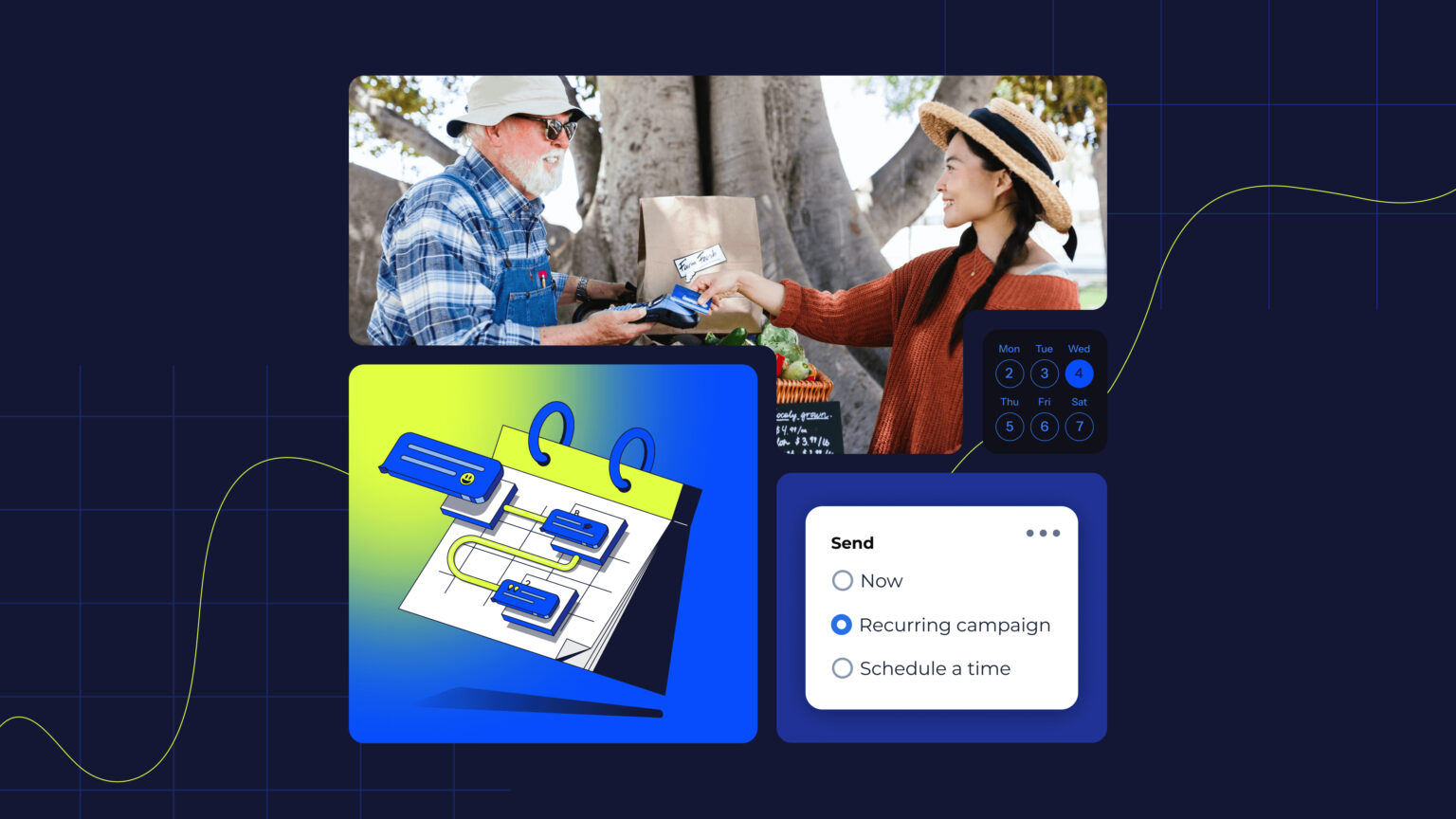
Tired of guessing at how often to text your customers? Steal these SMS templates to plan your first 30 days of texts (and beyond).

Figuring out how often to text looks, from a distance, like a seriously tricky knot to untie for anyone starting out in SMS marketing.
Striking a balance between staying top-of-mind for your customers and annoying them with too many messages is important.
We here at SimpleTexting help thousands of businesses through this process every day. So, we’re going to condense the steps for you here.
According to our State of SMS Marketing 2024 report, “Most consumers (48%) who subscribe to SMS marketing want to receive texts from businesses once every other week, followed by 36% who want to receive them once a week.”
So which is it — once a week or every other week? We asked consumer psychologist Dr. Michael Barbera how to think about texting frequency, and he perfectly summarized it for us:
Oftentimes, for small- and medium-sized businesses, if sales are down, it’s ‘harass, harass, harass.’ So, less is more.

Dr. Michael Barbera
Chief behavioral officer, Clicksuasion Labs
So if you’re looking for a quick and straightforward answer for how often your business should text — especially in your first 30 days — we recommend sending two to four promotional text messages per month (plus transactional and automated texts as needed).
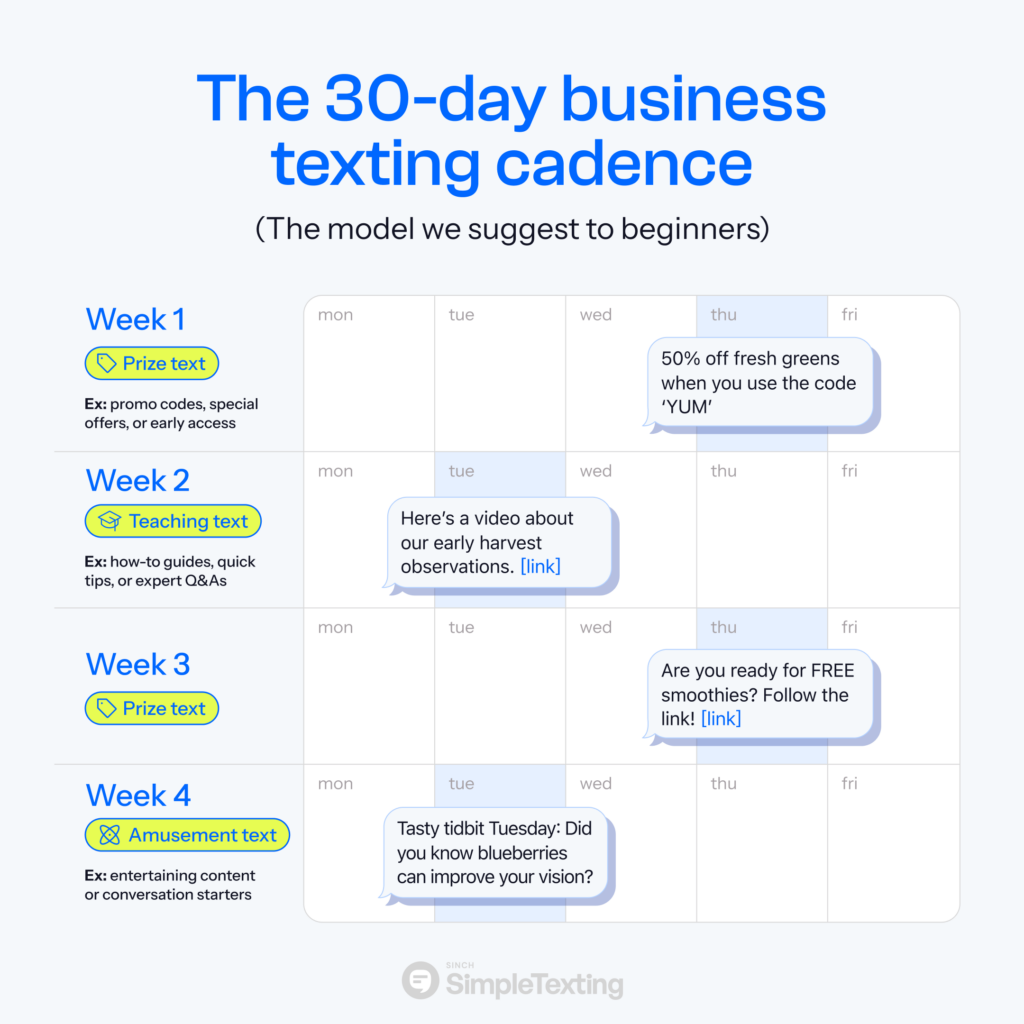
Examples: promo codes, special offers, or early access to products or services
Examples: how-to guides, quick tips, or expert Q&As
Examples: promo codes, special offers, or early access to products or services
Examples: entertaining content or conversation starters
Now, we know this framework doesn’t take into consideration:
The rest of this article will walk you through how to decide how often to text if our quick-and-easy business texting cadence doesn’t make sense for your organization.
Check out these helpful texting schedules if the weekly cadence doesn’t fit your needs.
For businesses with customers who typically buy every other week, we suggest the following:
One prize text and one teaching or amusement text every other week (on non-consecutive days). Alternate teaching and amusement texts.
Example: Send a promo code on Monday and a how-to vlog on Thursday.
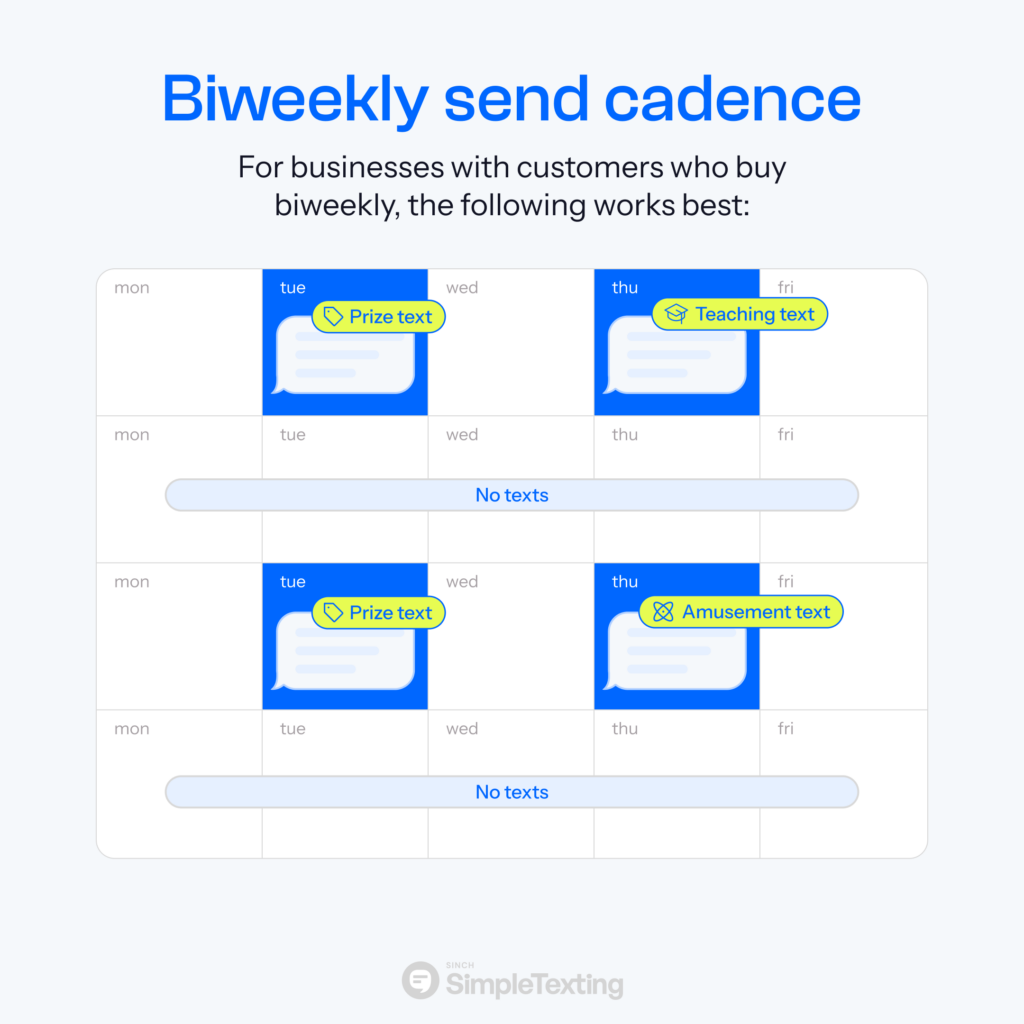
Types of businesses that may fit this use case: Apparel brands, food delivery services and restaurants, e-commerce businesses
For businesses that run mostly on monthly orders, stick to:
One prize text twice monthly (pay special attention to whether your customers buy more at certain times of the month to influence timing), with one teaching text each month.
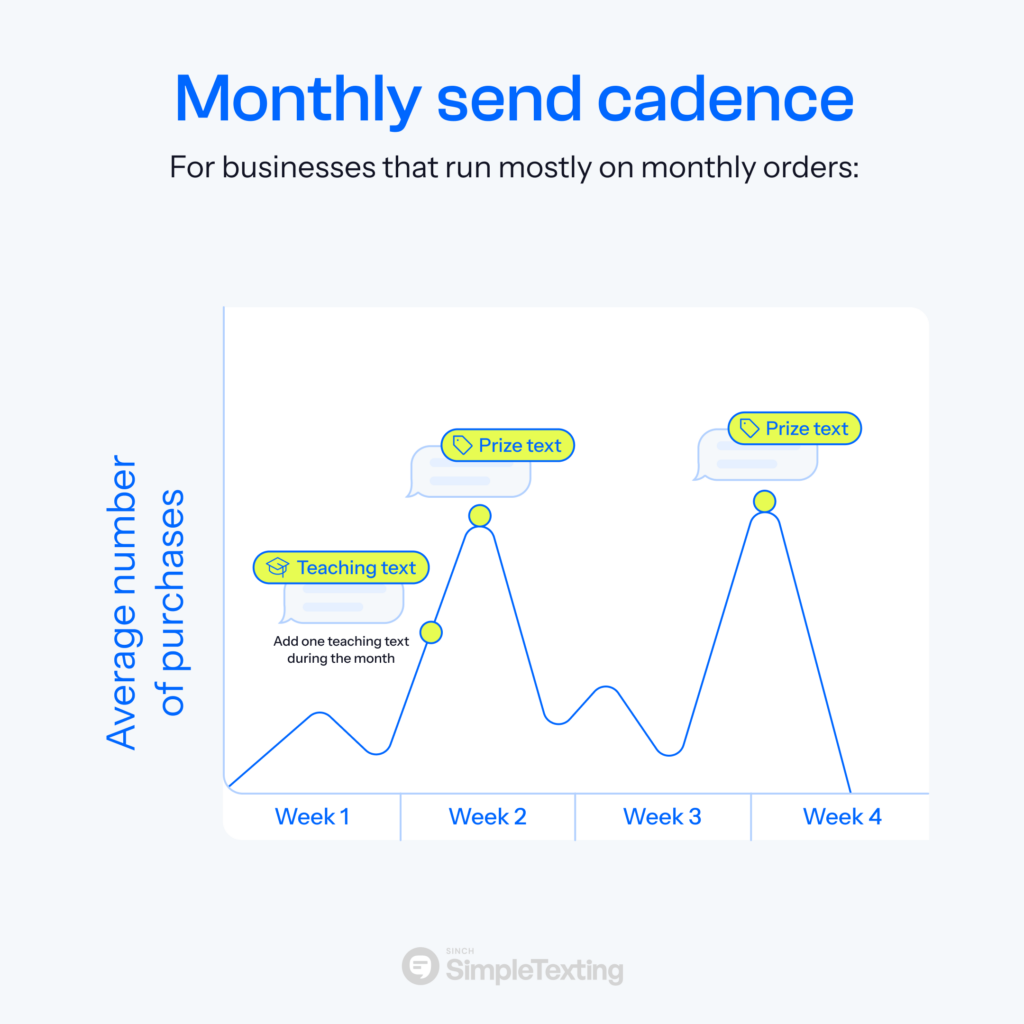
Types of businesses that may fit this use case: Pet supply delivery brands (like Chewy), salons, regular product renewal brands
While brainstorming this article, Dani Henion made the following comment about businesses that provide quarterly orders or services:
If I’m only buying from someone a few times a year, I don’t want to hear from them much more often than that.

Dani Henion
Content Lead at SimpleTexting
So, with that in mind, we suggest the following texting schedule for businesses with quarterly buying cycles:
Send one reminder that your services may be needed soon and a special offer on those services a week or two before you want your customers to book with you.
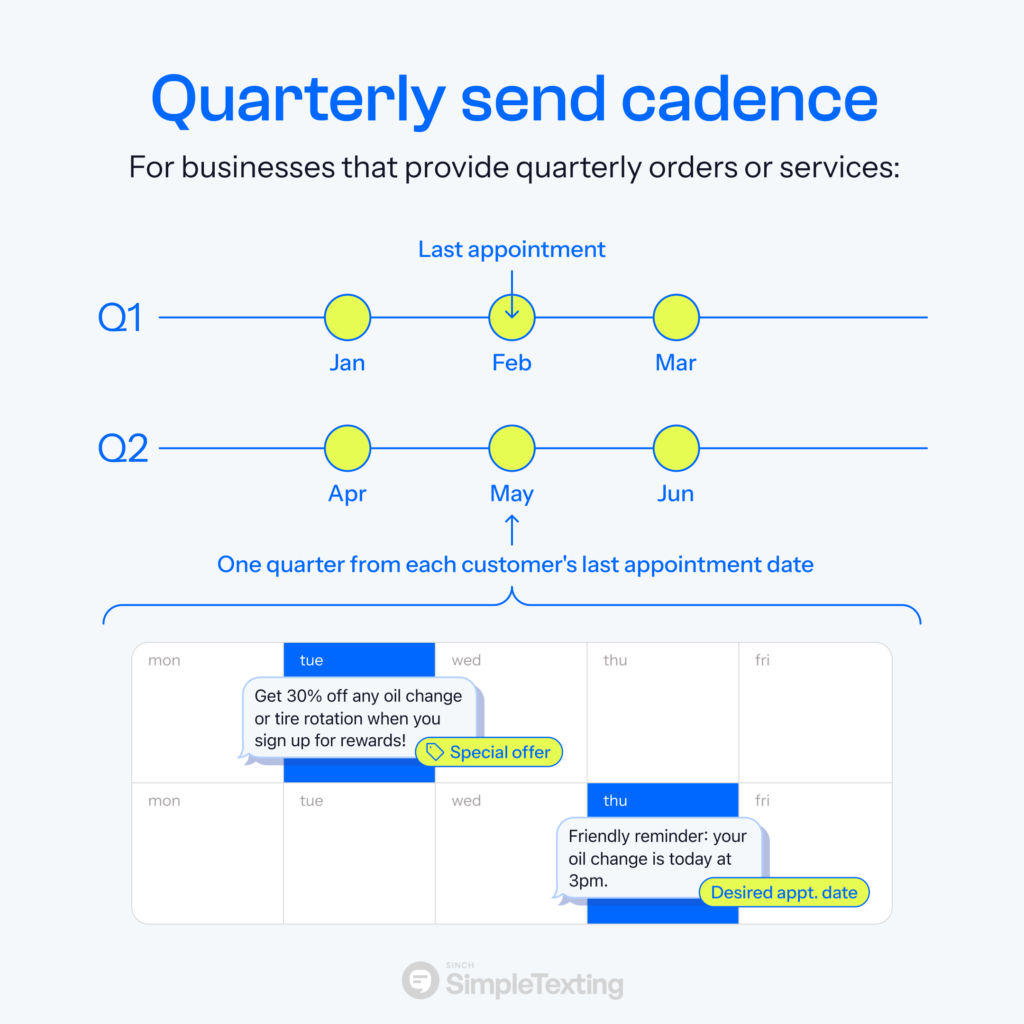
If that sounds confusing or tough to keep track of, integrate your appointment software with your texting platform to trigger these texts a set amount of time after each customer’s last appointment. This is what Fargo Moorhead Chiropractic does to re-engage clients 30 days after their last appointments (I know that’s a monthly example, but read the article where we break down FM Chiropractic’s approach to learn more).
Types of businesses that may fit this use case: Pest control companies, mechanics, doctor’s offices.
This is a similar setup to a quarterly cadence, but it’s based on specific seasons rather than how much time has passed.
For seasonal businesses, send one prize text as a reminder that the busy season is coming up to incentivize bookings. During the season, send one prize text per month to customers who haven’t yet bought.
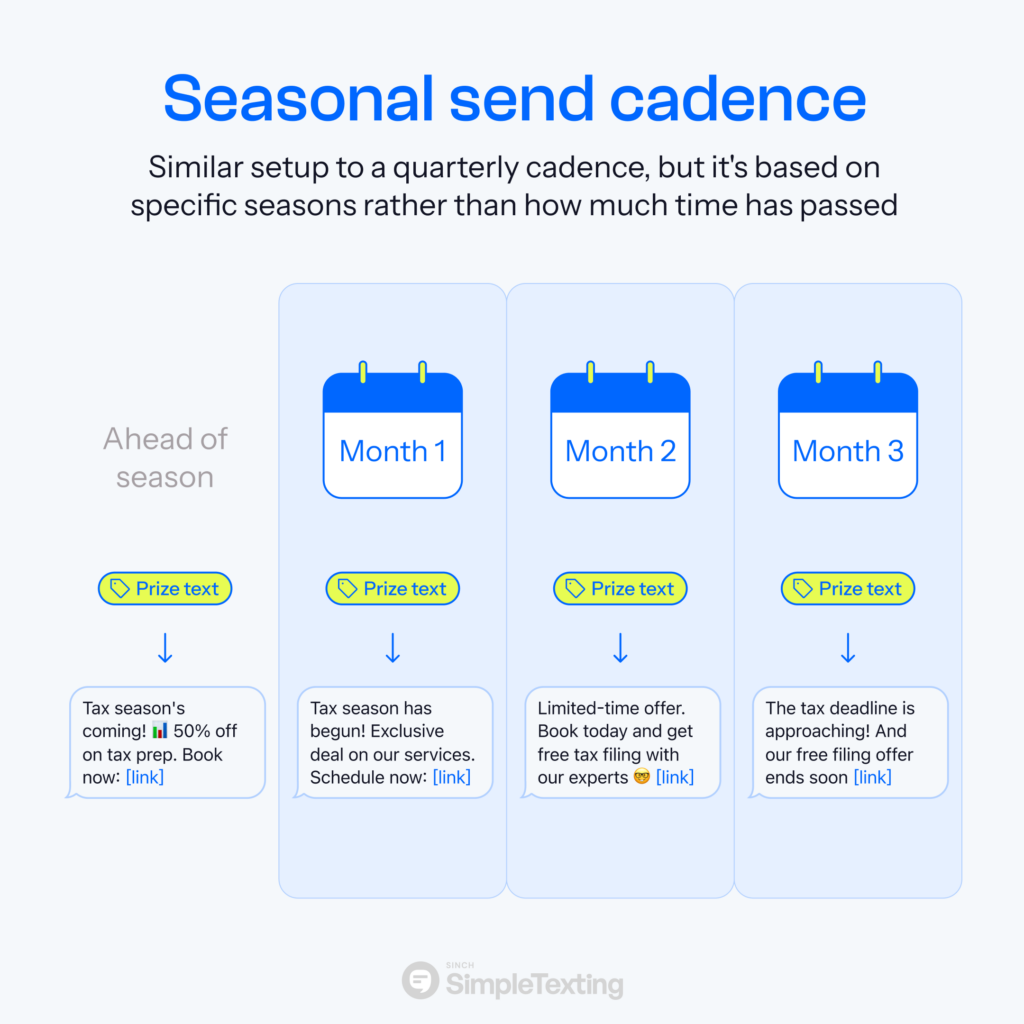
Types of businesses that may fit this use case: Tax professionals, event planners, travel agents
By this, we mean companies that throw events on their own schedule throughout the year.
This is something our marketing team specifically has a lot of experience with, so let’s look at the cadence we use.
Before events like webinars, we send out one invitation message when we schedule the event (around one month before the day). We then follow up with those who haven’t registered about one week beforehand.
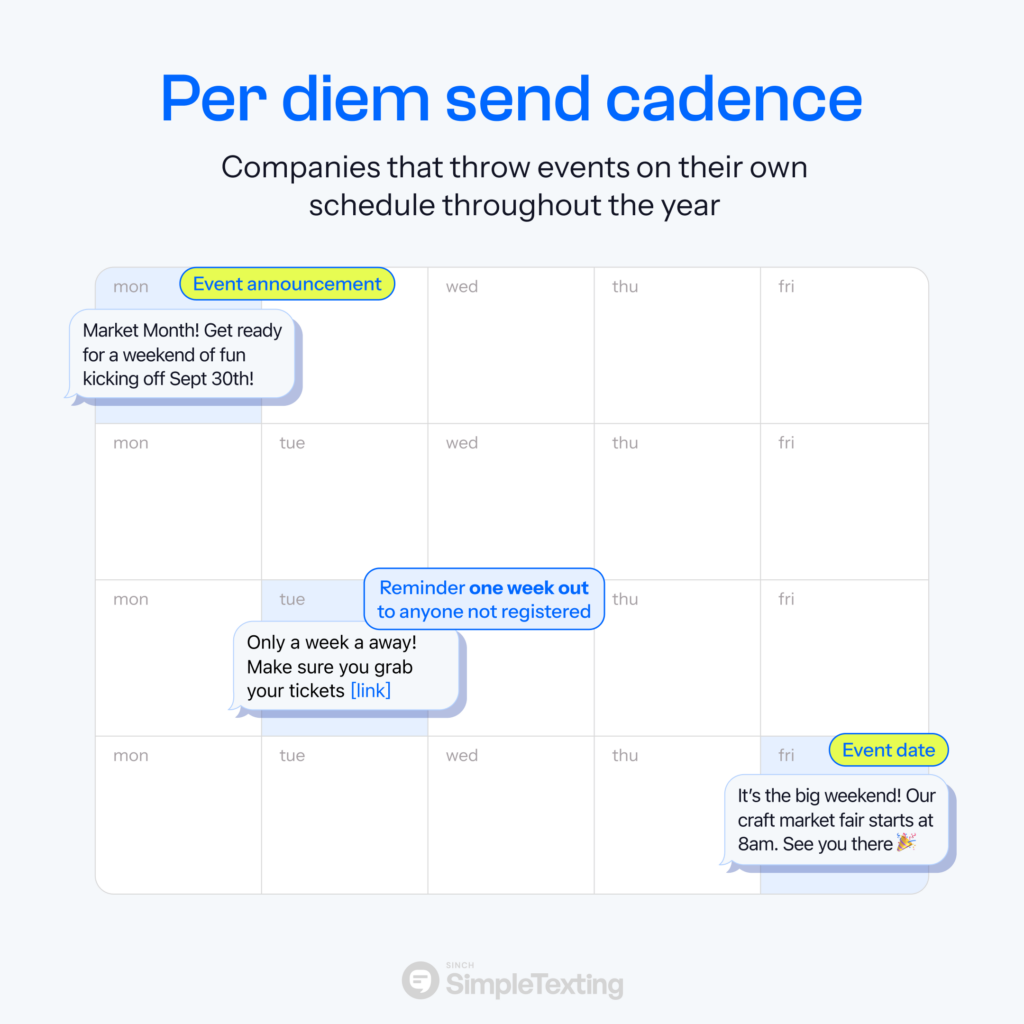
Finally, we send out one more message thanking attendees for joining us and asking for feedback. We make sure this last message contains a recap and Q&A responses for extra value.
Types of businesses that may fit this use case: Any who runs events
Hopefully, these example cadences have given you a solid starting point as you plan how often you’ll text.
We do recognize, though, that you may still want to customize those examples further for your own business. Here are a few things to keep in mind as you do.
Obviously, before you start sending, it’s important to get clear and cohesive on the content of your messages.
You’ve likely gotten the big picture from the examples above, but there are a couple of important points to iron out from there.
By this, we mean set aside time in your schedule for texting.
At SimpleTexting we like to say that texting is powerful, but you have to do it right.
A big part of that is knowing when to send your texts (and how often) for your specific audience.
Hopefully, this guide has given you the tools you need to plan out your texting strategy with confidence.
Ready to try it out? Start a free trial of SimpleTexting and send a text to yourself today to see how it works.
Lily is a content marketing specialist at SimpleTexting. She specializes in making helpful, entertaining video content and writing blogs that help businesses take advantage of all that texting has to offer. When she’s not writing or making TikToks, you can find Lily at roller derby practice or in a yoga studio in the Seattle area.
More Posts from Lily NortonRich media is a great way to engage with your subscribers. You can link to things like images, coupons, or even videos in your SMS marketing message.
ReadLearn how to attach a picture to an SMS or MMS message. Enhance your communications through the power of media!
ReadStart a text marketing campaign or have a 1-on-1 conversation today. It's risk free. Sign up for a free 14-day trial today to see SimpleTexting in action.
No credit card required